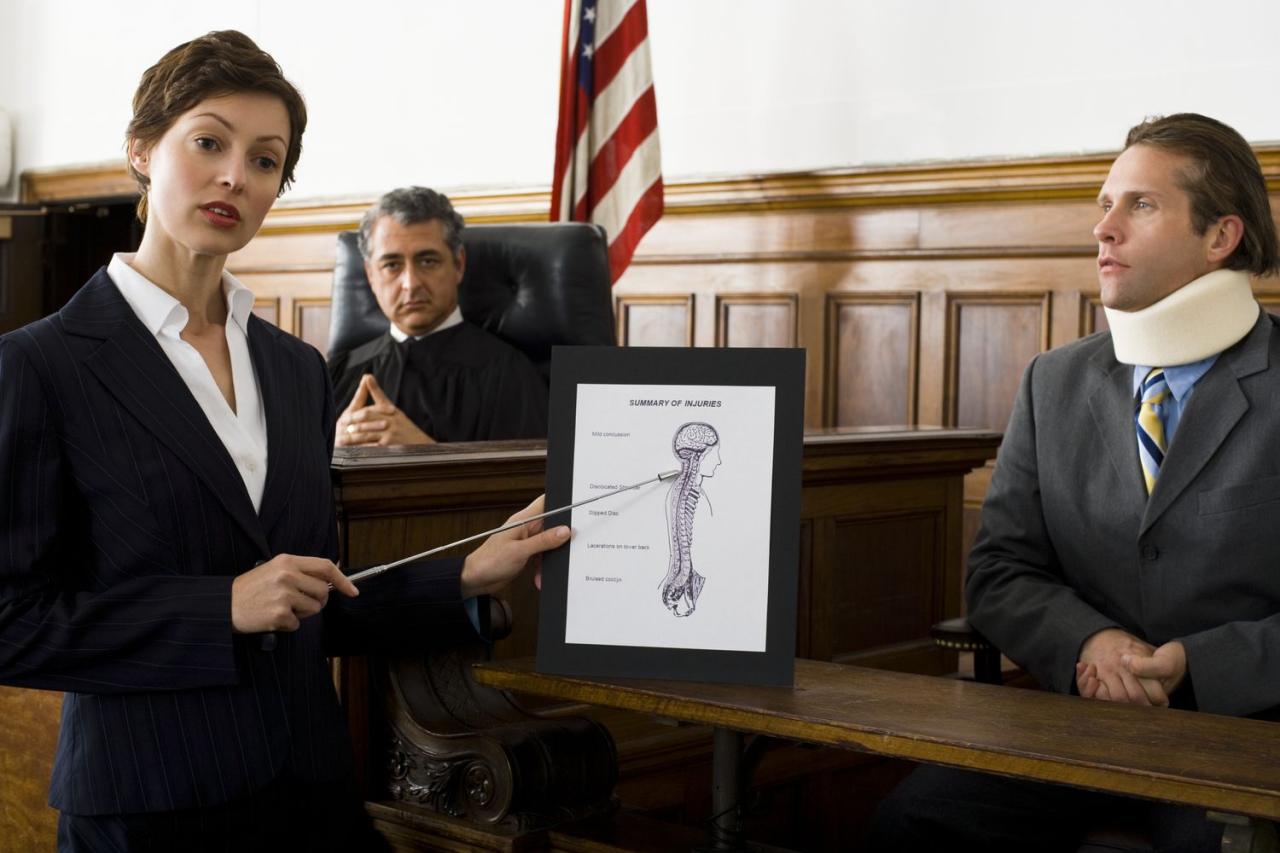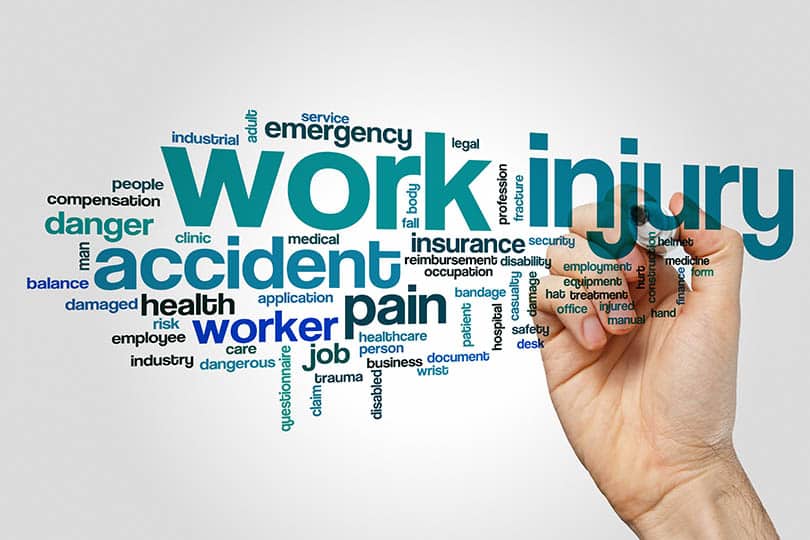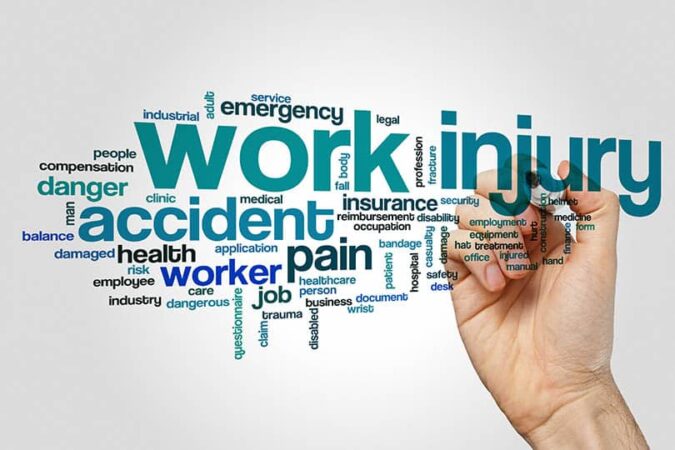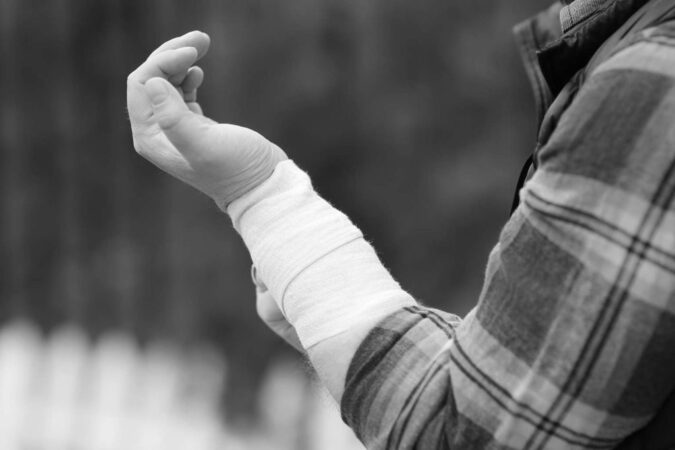
Legal Definition of On-the-Job Injury

An on-the-job injury, also known as a work-related injury, is defined as any physical or mental harm that occurs during the course of employment and arises out of the work itself. This includes injuries sustained while performing work duties, as well as injuries caused by work-related accidents or exposure to hazardous substances.
Common examples of on-the-job injuries include:
- Strains and sprains
- Cuts and lacerations
- Broken bones
- Burns
- Repetitive motion injuries
- Occupational diseases
To be considered work-related, an injury must meet the following legal requirements:
- The injury must occur during the course of employment, meaning it must happen while the employee is working or performing work-related activities.
- The injury must arise out of the employment, meaning it must be caused by the work itself or by conditions related to the work.
Types of On-the-Job Injuries

On-the-job injuries can vary widely in nature and severity. Here’s a comprehensive table outlining different types of on-the-job injuries, their descriptions, and examples:
| Type of Injury | Description | Examples |
|---|---|---|
| Musculoskeletal Injuries | Injuries to muscles, tendons, ligaments, bones, or joints | Strains, sprains, fractures, dislocations |
| Overexertion Injuries | Injuries caused by repetitive or forceful movements | Carpal tunnel syndrome, tendonitis, bursitis |
| Slip-and-Fall Injuries | Injuries resulting from slips, trips, or falls | Bruises, lacerations, fractures, head injuries |
| Impact Injuries | Injuries caused by being struck by an object | Contusions, lacerations, fractures, head injuries |
| Electrical Injuries | Injuries caused by electrical currents | Burns, electrocution, nerve damage |
| Chemical Injuries | Injuries caused by exposure to hazardous chemicals | Burns, skin irritation, respiratory problems |
| Other Injuries | Injuries not falling into other categories | Heat stroke, frostbite, hearing loss |
According to the Bureau of Labor Statistics, musculoskeletal injuries are the most common type of on-the-job injury, accounting for nearly one-third of all workplace injuries. Overexertion injuries and slip-and-fall injuries are also prevalent, accounting for approximately 20% and 15% of workplace injuries, respectively.
Causes of On-the-Job Injuries
On-the-job injuries are a prevalent concern in various industries, leading to physical, emotional, and financial distress for employees. Understanding the causes of these injuries is crucial for developing effective preventive measures and ensuring workplace safety.
Common factors contributing to workplace accidents include inadequate training, faulty equipment, hazardous work environments, and insufficient safety protocols. Employer negligence, such as failing to provide proper safety gear or neglecting to address known hazards, can also play a significant role in causing on-the-job injuries.
Equipment-Related Causes
Defective or poorly maintained equipment poses a substantial risk to employees. Machinery malfunctions, electrical hazards, and inadequate safety guards can lead to severe injuries, including lacerations, fractures, and burns. Employers are responsible for ensuring that equipment is regularly inspected, maintained, and operated according to safety guidelines.
Environmental Factors
Hazardous work environments, such as slippery floors, poor lighting, or excessive noise levels, can contribute to accidents. Inadequate ventilation or exposure to hazardous substances can also lead to respiratory problems, skin irritation, or other health issues. Employers must conduct regular safety inspections, provide appropriate protective gear, and implement measures to mitigate environmental hazards.
Human Factors
Human factors, including fatigue, stress, and lack of concentration, can also increase the risk of on-the-job injuries. Long working hours, repetitive tasks, and demanding work schedules can lead to errors and accidents. Employers should prioritize employee well-being by providing adequate rest breaks, promoting a positive work-life balance, and addressing any ergonomic concerns that may contribute to fatigue or discomfort.
Legal Protections for Injured Workers

Injured workers have legal protections in place to safeguard their rights and ensure they receive fair compensation for their injuries. These protections vary depending on the jurisdiction, but generally include the following:
Workers’ Compensation System
The workers’ compensation system is a no-fault system that provides benefits to employees who suffer injuries or illnesses arising out of and in the course of their employment. Benefits may include medical expenses, lost wages, and disability payments. The system is designed to provide injured workers with a streamlined process for obtaining compensation without having to prove fault on the part of their employer.
Role of On-the-Job Injury Lawyers
On-the-job injury lawyers play a vital role in protecting the rights of injured workers. They can assist workers in navigating the workers’ compensation system, ensuring they receive all the benefits they are entitled to. Lawyers can also help workers pursue legal action against their employers in cases where negligence or intentional misconduct is suspected.
Seeking Compensation for On-the-Job Injuries
If you’ve sustained an injury while on the job, it’s crucial to seek compensation to cover medical expenses, lost wages, and other related costs. Here’s a step-by-step guide to help you navigate the process:
The first step is to report the injury to your supervisor or employer promptly. Ensure to provide detailed information about the incident, including the date, time, location, and any witnesses.
Filing a Workers’ Compensation Claim
In most cases, you’ll need to file a workers’ compensation claim. This involves submitting a form to your state’s workers’ compensation board or agency. The form typically includes information about your injury, your employer, and your contact details.
Once you’ve filed a claim, the workers’ compensation board will review it and determine if you’re eligible for benefits. If your claim is approved, you may receive benefits such as:
- Medical expenses
- Lost wages
- Disability benefits
- Vocational rehabilitation
Role of an On-the-Job Injury Lawyer
An on-the-job injury lawyer can assist you in maximizing your compensation by:
- Helping you navigate the workers’ compensation system
- Negotiating a fair settlement with the insurance company
- Representing you in court if necessary
If you’ve been injured on the job, don’t hesitate to seek legal advice. An experienced attorney can guide you through the process and help you get the compensation you deserve.
Preventing On-the-Job Injuries
Workplace accidents and injuries can have severe consequences for employees and employers alike. Implementing proactive measures to prevent such incidents is crucial for maintaining a safe and healthy work environment. Several strategies can effectively minimize the risk of on-the-job injuries.
Role of Employers in Creating a Safe Work Environment
Employers bear the primary responsibility for creating and maintaining a safe workplace. This involves identifying potential hazards, implementing safety protocols, providing adequate training, and ensuring employees adhere to safety regulations. Regular safety inspections, risk assessments, and employee feedback can help identify areas for improvement and mitigate potential risks.
Importance of Employee Training and Safety Protocols
Well-trained employees are more likely to recognize and avoid hazards, follow safety procedures, and use equipment properly. Comprehensive training programs should cover topics such as hazard identification, safe work practices, emergency response, and the use of personal protective equipment (PPE). Clear safety protocols Artikel specific guidelines for performing tasks safely and should be regularly reviewed and updated to ensure they remain effective.





